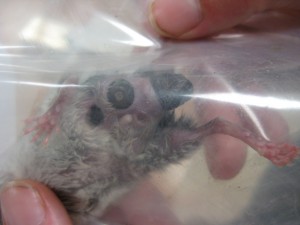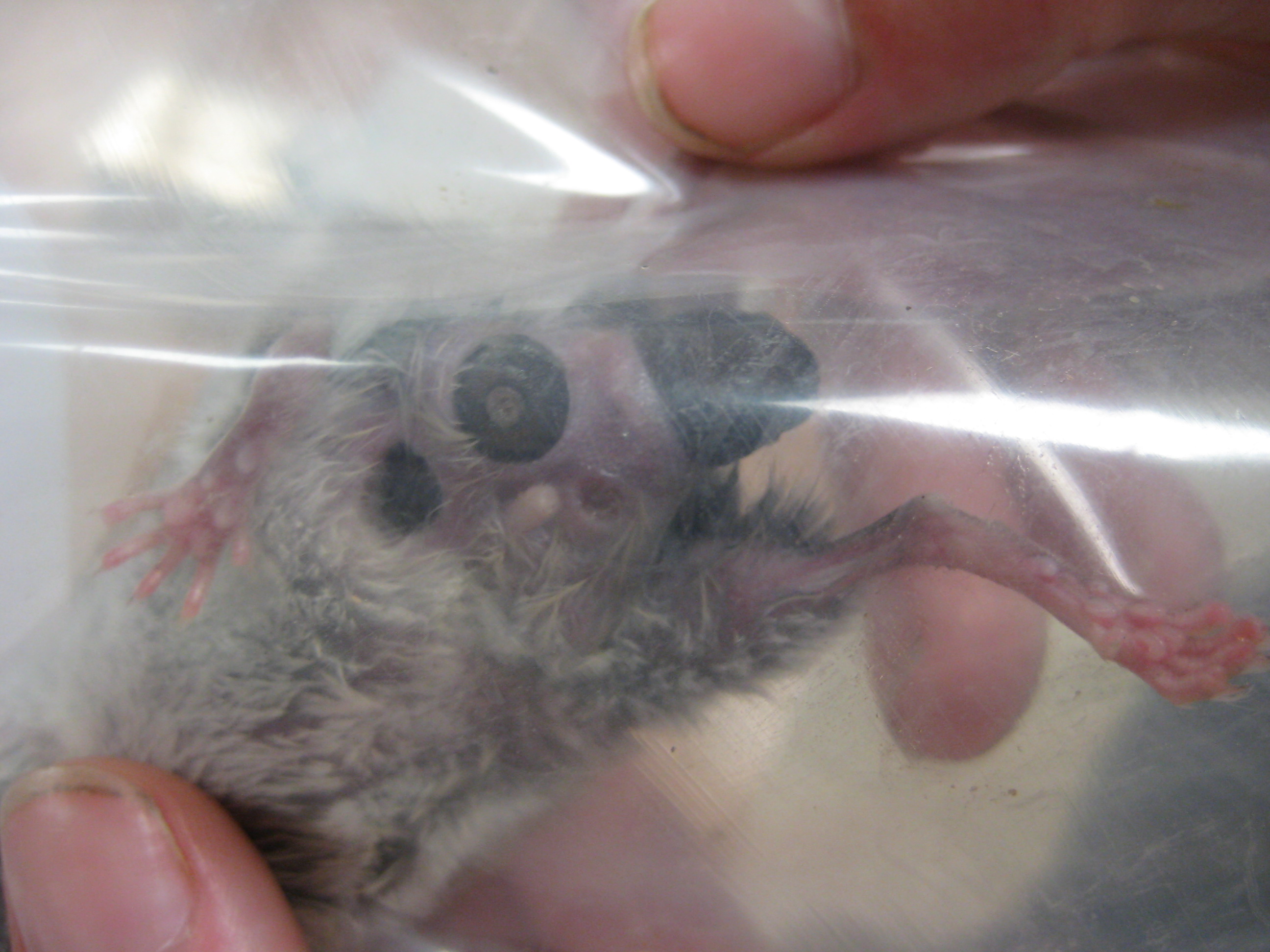
Warning: If you dislike parasites or have a queasy stomach you might want to hit the back button.
One of my favorite, disgusting, ecological topics to discuss is the Bot Fly (Dermatobia hominis). Its lifecycle starts with an adult fly laying its eggs on the abdomen of a mosquito. When the mosquito encounters a warm-blooded animal, the eggs sense the heat and drip off of the mosquito down a hair follicle into the hole created by the mosquito’s mouth parts. Then these tiny eggs blossom into beautiful white larvae, armed with clenching mouthparts and a row of spikes that keep the host from pushing them out. On the other end a breathing tube that doubles as an anus protrudes slightly through a hole in the animal’s skin. Secretions from the larva prevent its home from attack by the host’s immune system as well as infection from bacteria. With time, the larva grows larger and larger, feasting on the host’s flesh, until it emerges as a squirming maggot about eight weeks later (Maier and Honigsmann 2004).
Although I cannot say that I have been lucky enough to host a Bot Fly larva, I have seen a number of other people go through this experience. A year and a half ago, when I was in the Ecuadorian Amazon with BU’s Tropical Ecology Program (I highly recommend this program, if you are considering it), and a girl studying howler monkeys discovered a mosquito bite that just refused to go away. This is the tell-tale sign of a Bot Fly. There are a few approaches to freeing yourself of the larva, the best of which involve suffocation by duct tape, nail polish, or Vaseline and subsequent removal in the same manner you’d pop a pimple. I’ve also heard, theoretically, that you can apply a slab of raw meat over the larva, which would choose to migrate out of your skin and into the meat instead of suffocating. The monkey-following girl chose the duct tape option, and had a friend use a snake-venom extractor to suck out the larva. Unfortunately, the next day, the girl noticed that the larva was not completely removed, and that she could still feel it squirming under her skin. A few days later, another go with the venom extractor resolved the problem. She saved the pieces of the larva in a small tube, and referred to it as her child.
The following summer, while I was in Panama, I was witness to a few more cases of the Bot Fly. My friend Dany acquired a nasty infection just above his ankle, and went to the doctor in town to see what it could be. The veins in his leg started turning black and his leg swelled up, making walking difficult. It turned out that he had scratched his mosquito bite enough to kill the larva, and its carcass was the source of the infection. Needless to say, it was surgically removed. My other friend, Sergio, started getting Bot Flies regularly because he was tracking frog calls at dusk during peak mosquito activity. He would suffocate and pop his babies out without hesitation. Although I did see him get more than one infection, he was not one to complain. I’m not sure that I could have reacted similarly.

My most recent experience with the Bot Fly concerns a different species. It has a black larva that infects the white-footed mouse (native in the US). When I first saw this maggot, I was convinced I was actually seeing the guts exploding out from the mouse’s anus, until I was informed that it was, in fact, the larva of a Bot Fly (Cuterebra emasculator). Compared to the size of the white-footed mouse, the Bot Fly is enormous, and is often located close to the mouse’s gonads. Counterintuitive as though it may be, white-footed mice can tolerate Bot Fly infection without compromising their fitness (Cramer and Cameron 2006). I’m happy that we, as intelligent human beings, at least have the ability to extract our Bot Flies, but this sloppy murder is more than just unpleasant; it’s downright disgusting. I hope if you’re heading to Bot Fly land that you are as fortunate as I have been in escaping this phenomenon.
Cramer, MJ and GN Cameron. 2006. Effects of bot fly (Cuterebra fontinella) parasitism on a population of white-footed mice (Peromyscus leucopus). Journal of Mammology 87(6):1103-1111.
Cramer, MJ and GN Cameron. 2007. Effects of bot fly, Cuterebra fontinella, parasitism on male aggression and female choice in Peromyscus leucopus. Animal Behaviour 74: 1419-1427.
Maier, H and H Honigsmann. 2004. Furuncular myiasis caused by Dermatobia hominis, the human botfly. Journal of the American Academy of Dermatology 50(2S1): 26-30.


That photo of the mouse made the bot fly smell come back to me. Thanks a lot for that. Also, great job on the article girl!
Great article. I agree, the Peromyscus bot-fly is disgusting. Luckily, we had our shrew friend to help us out.